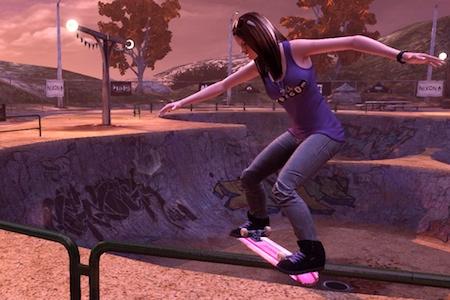At Work With a Video Game Designer
Published: Jul 27, 2015

Designing games involves creating stories, characters, dialogue, graphics, and sound effects, as well as sometimes writing programming code (although much programming is now automated). It is a very creative process, requiring imagination and computer and communication skills to develop games that are interactive and entertaining. Some game designers work on their own and try to sell their designs to companies that produce and distribute games; others are employees of companies such as Electronic Arts, Nintendo of America, and many others. Whether designers work alone or for a company, their aim is to create games that get players involved. Game players want to have fun, be challenged, and sometimes learn something along the way.
Each game must have a story line as well as graphics and sound that entertain and engage the players. Story lines are situations that the players will find themselves in and make decisions about. Designers develop a plan for combining the story or concept, music or other sound effects, and graphics. They design rules to make it fun, challenging, or educational, and they create characters for the stories or circumstances, worlds in which these characters live, and challenges these characters will face.
One of the first steps is to identify the audience that will be playing the game. How old are the players? What are they interested in? What kind of game will it be: action, adventure, "edutainment," role-playing, or sports? Which platform will the game use: video game system (e.g., Nintendo, Playstation, Wii, Xbox), computer (Macintosh or PC), or online (Internet via subscription or free download)? The next steps are to create a design proposal, a preliminary design, and a final game design. The proposal is a brief summary of what the game involves. The preliminary design goes much further, outlining the concept in more detail (the story of the game); how the players get involved; what sound effects, graphics, and other elements will be included (What will the screen look like? What kinds of sound effects should the player hear?); and what productivity tools, such as word processors, database programs, spreadsheet programs, flowcharting programs, and prototyping programs, the designer intends to use to create these elements. Independent designers submit a product idea and design proposal to a publisher along with a cover letter and resume.
Employees work as a team to create the proposal and design. Teamwork might include brainstorming sessions to come up with ideas, as well as involvement in market research (surveying the players who will be interested in the game). The final game design details the basic idea, the plot, and every section of the game, including the startup process, all the scenes (such as innings for baseball games and maps for edutainment games), and all the universal elements (such as rules for scoring, names of characters, and a sound effect that occurs every time something specific happens). The story, characters, worlds, and maps are documented. The game design also includes details of the logic of the game, its algorithms (the step-by-step procedures for solving the problems the players will encounter), and its rules; the methods the player will use to load the game, start it up, score, win, lose, save, stop, and play again; the graphic design, including storyboards and sample art; and the audio design. The designer might also include marketing ideas and proposed follow-up games.
Designers interact with other workers and technologists involved in the game design project, including programmers, audio engineers, artists, and even asset managers, who coordinate the collecting, engineering, and distribution of physical assets to the production team (the people who will actually produce the physical CD-ROM or DVD, or downloadable software program).
Designers need to understand games and their various forms, think up new ideas, and experiment with and evaluate new designs. They assemble the separate elements (text, art, sound, video) of a game into a complete, interactive form, following through with careful planning and preparation (such as sketching out scripts, storyboards, and design documents). They write an implementation plan and guidelines (How will designers manage the process? How much will it cost to design the game? How long will the guidelines be—five pages? 300?). Finally, they amend designs at every stage, solving problems and answering questions. Computer and video game designers often keep scrapbooks, notes, and journals of interesting ideas and other bits of information. They collect potential game material and even catalog ideas, videos, movies, pictures, stories, character descriptions, music clips, sound effects, animation sequences, and interface techniques. The average time it takes to design a game, including all the elements and stages just described, can range from about three to 30 months.
The above was excerpted from the new Vault Guide to Computer and Video Game Design Jobs.
Follow us on Twitter.
Read More:
6 Interview Tips From Tech Recruiters
Top 10 Tech Startups to Work For in NYC